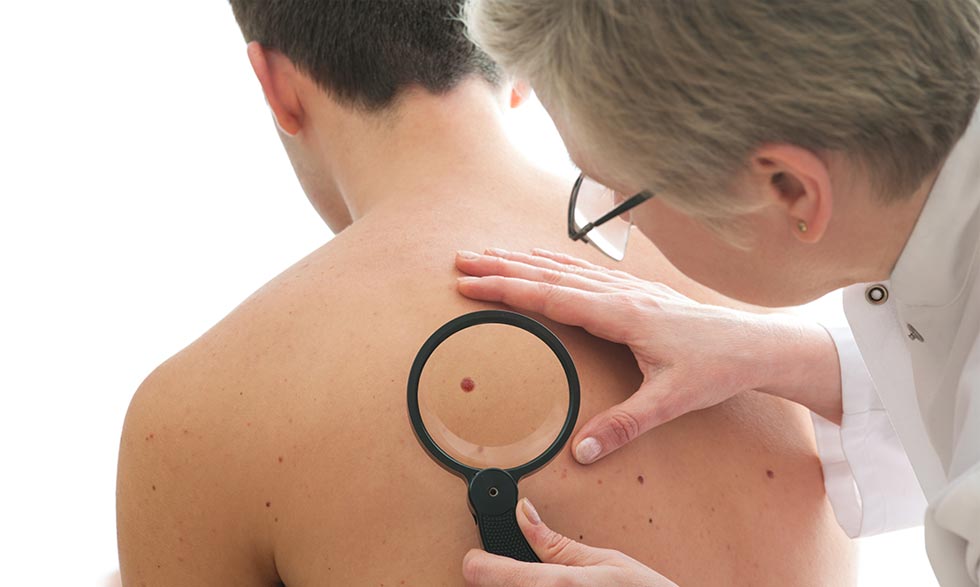
Skin cancer is the most common form of cancer in the U.S. It’s also largely preventable. Here is information from the National Cancer Institute about common risk factors and types of skin cancer.
What causes it:
The disease forms in tissues of the skin and is usually caused by the sun or ultraviolet (UV) rays. UV rays are an invisible type of radiation that comes from the sun, tanning beds, and sun lamps. The rays can change skin cells if you are exposed to them too much.
Risk factors:
- Being exposed to natural or fake sunlight over long periods of time.
- Having a fair complexion. However, people of all skin colors can get skin cancer.
- A history of sunburns.
- Having a personal or family history of skin cancer.
Where it happens:
Skin cancer can happen anywhere on your body, but it is most common in skin that is often exposed to sunlight, such as the face, neck, and hands. When checking for skin cancer, your health care provider will look for moles or birthmarks that look abnormal in color, size, shape, or texture.
The “ABCDE” rule
The “ABCDE” rule is a good way to spot early melanoma. Look for changes in moles, birthmarks, and other areas of the skin:
- Asymmetry. The shape of one half does not match the other half.
- Border that is irregular. The edges are often ragged, notched, or blurred in outline. The color may spread into the surrounding skin.
- Color that is uneven. Shades of black, brown, and tan may be present. Areas of white, gray, red, pink, or blue may also be seen.
- Diameter. There is a change in size, usually an increase. Melanomas can be tiny, but most are larger than 6 millimeters (about 1/4 inch) wide.
- Evolving. The mole has changed over the past few weeks or months.
Common types of skin cancer:
The three most common types are found on the top layer of the skin: basal cell, squamous cell, and melanoma. Exposure to the sun and ultraviolet rays are the leading cause of these types of cancer.
- Basal cell cancer grows in areas of your body that are more exposed to the sun, such as your head and neck. They grow slowly, rarely spread, and are the least likely to cause death.
- Squamous cell cancer is found on the outer layer of the skin, usually on your face, ears, neck, lips, and backs of your hands; the areas of your body that get the most sun. The cells can spread to other places in your body, but if caught in time, can be removed and are not deadly.
- Melanoma cancer is much less common than basal cell and squamous cell cancers. However, the cancer cells are more likely to grow and spread if left untreated. Although it is the least common of skin cancers, it is the most deadly.
